Hue Imperial City represents the golden age of the Nguyen Dynasty, featuring a magnificent system of royal palaces. It has since become a must-visit tourist destination for both local and international visitors. This article will provide an in-depth guide to the ancient capital, ensuring a complete and unforgettable sightseeing experience when tourists explore Hue.
History of Hue Imperial City
Hue Imperial City, also known as Thuan Hoa Imperial City, is situated by the picturesque Perfume River. The ancient capital is recognized by UNESCO as a World Cultural Heritage site, featuring a distinct architectural style that makes it a highlight of Hue.
In 1802, immediately after unifying the country and ascending to the throne, Emperor Gia Long – the first emperor of the Nguyen Dynasty – chose Hue as the site to construct the imperial city. At that time, people only traveled by elephants and horses, so the emperor believed that the capital should be situated at the center of the country for convenient transportation and communication.
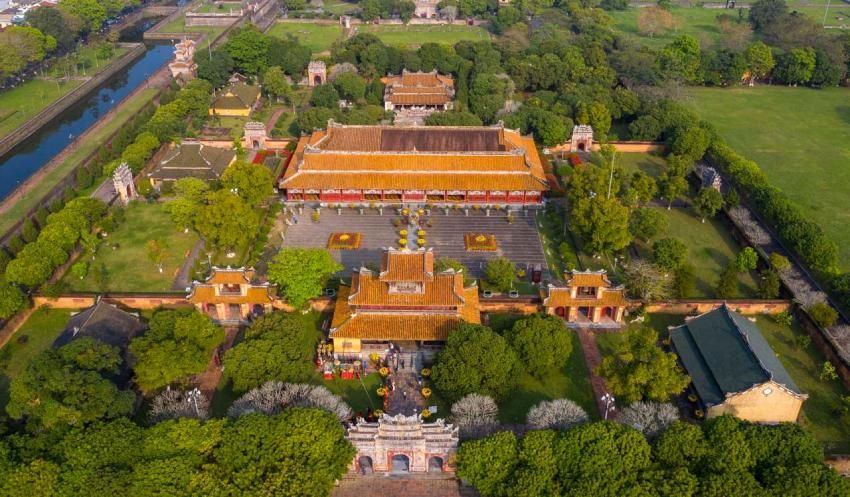
After that, the Imperial City of Hue was planned, and construction commenced in the summer of 1805. Emperor Gia Long and the high-ranking officials of the Nguyen Dynasty undertook the entire location survey process. The imperial city complex was completed in 1832, under the reign of Emperor Minh Mang.
The architecture of Hue Imperial City
Imperial City Hue Vietnam, situated on the northern bank of Perfume River, covers an expansive area of 520 hectares. The rampart that encircles the complex stretches almost 10 kilometers long, stands 6.6 meters tall, and is 21 meters thick. The rampart is curved and fortified, covering evenly spaced fortresses. Surrounding the rampart is a system of rivers and moats that serve both as a defense and waterway transportation system. The citadel is home to ten main gates:
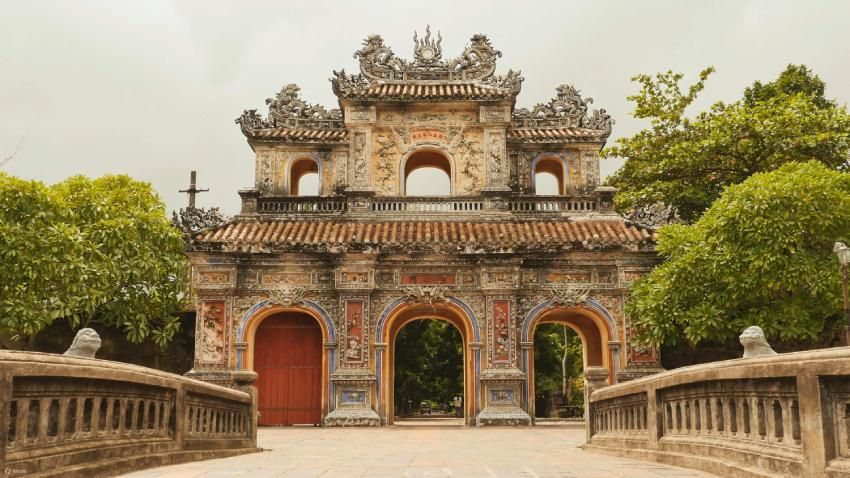
-
North Gate (Hau Gate)
-
West-North Gate (An Hoa Gate)
-
West Gate
-
West-South Gate (Huu Gate)
-
South Gate (Nha Do Gate)
-
Quang Duc Gate
-
The Nhon Gate (Ngan Gate)
-
East-South Gate (Thuong Tu Gate)
-
East Gate (Dong Ba Gate)
-
East-North Gate (Ke Trai Gate)
Apart from the ten main gates, Hue Imperial City also has the minor Tran Binh Mon Gate and two water gates, Dong Thanh Thuy Quan and Tay Thanh Thuy Quan.
What are the most impressive works in Hue Citadel City?
Ngo Mon Gate
Ngo Mon Gate, situated in the south of the Imperial City of Hue, serves as the grand entrance and an intricate architectural complex. When seen from a distance, it presents itself as a splendid and grand castle with cascading steps constructed from long slabs of stone, leading up to Ngu Phung Pavilion.
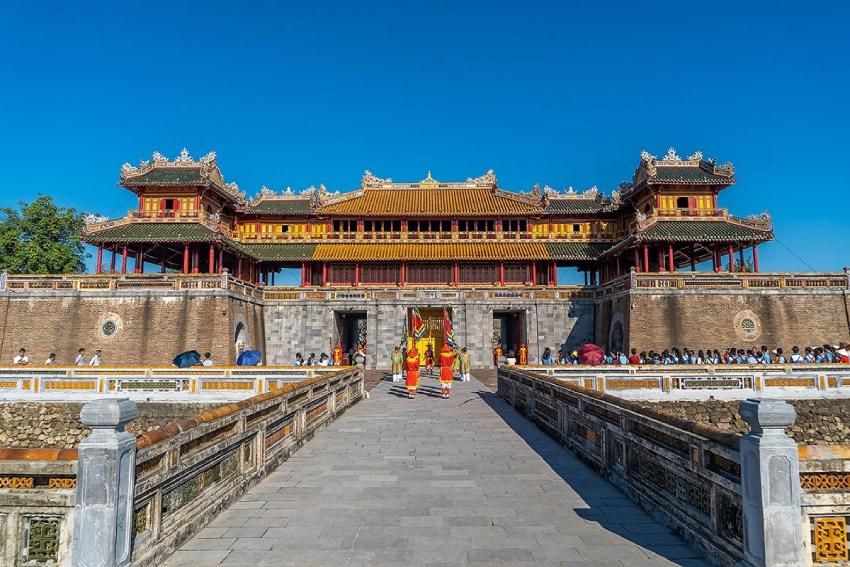
Imperial Citadel
The Hue Imperial Citadel, or Hoang Thanh served as the residence of the emperors and the royal family, and the administrative center of the royal court. It is also a significant site of worship for ancestors and the late emperors of the Nguyen Dynasty.
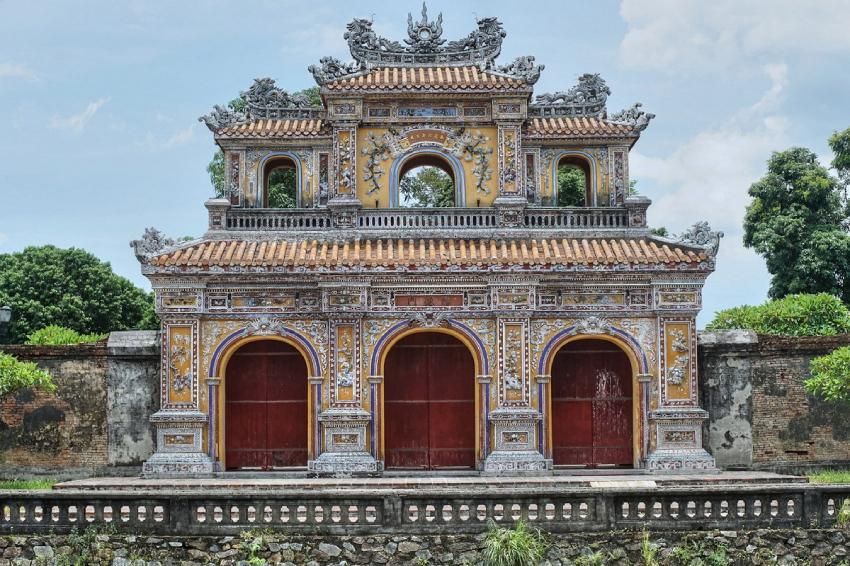
Construction of Hoang Thanh began in 1804 under the reign of Emperor Gia Long and was completed in 1833 under the reign of Emperor Minh Mang. The citadel has four gates, with Ngo Mon as the grand entrance. Inside the citadel, there are many impressive structures, including Thai Hoa Palace, Dien Tho Residence, Hien Lam Pavilion, and more.
Forbidden Purple City
The Forbidden Purple City is located at the heart of Hue Imperial City. It was constructed in 1803 and received its name in 1821 during the reign of Emperor Minh Mang. It is designed in a rectangular shape, with Dai Cung Mon as its front gate.
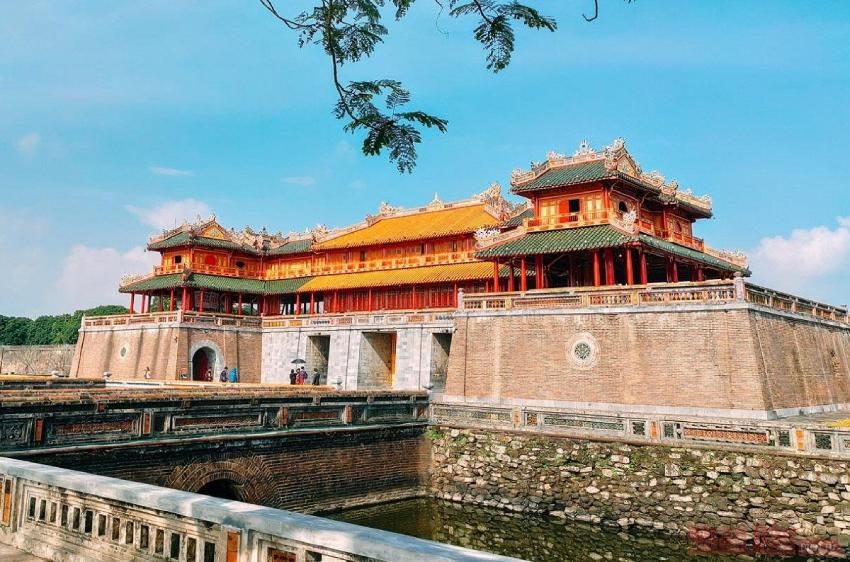
The Forbidden Purple City includes numerous architectural structures within its innermost citadel, Tu Cam Thanh. Some of the key buildings and their functions are:
-
Can Thanh Palace served as the residence of the emperor
-
Khon Thai Palace served as the residence of the queen
-
Duyet Thi Duong Royal Theatre was the venue for court dramas performed for the emperor, princes, high-ranking officials, and ambassadors
-
Thuong Thien Imperial Kitchen was responsible for preparing meals for the emperor and royal family
-
Duong Tam Palace was the emperor's retreat where he could rest and indulge in leisure activities
-
Thai Binh Pavilion was the reading area of the emperor
-
Minh Quang Palace was the residence of the princes
-
Trinh Minh Palace served as the residence of the concubines
Hue Imperial City is a must-visit destination for anyone interested in Vietnamese history and culture. With this ultimate guide, you will have all the information you need to fully appreciate the wonders of the Imperial City. Make sure to come and contemplate this historical relic of Vietnam!




